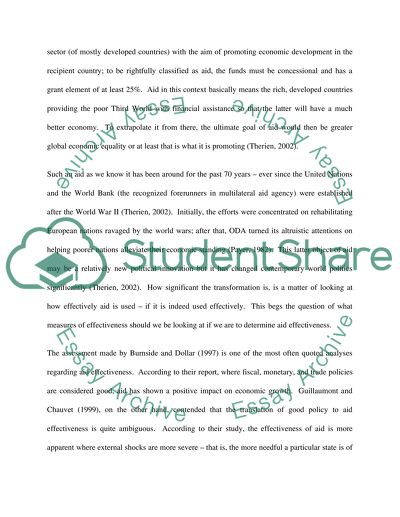Cite this document
(Measurements of Aid Effectiveness Literature review, n.d.)
Measurements of Aid Effectiveness Literature review. Retrieved from https://studentshare.org/finance-accounting/1564635-does-aid-work-if-so-where-and-how-if-not-why-provide-a-solid-and-coherent-evidence-base-to-back-up-your-assertion
Measurements of Aid Effectiveness Literature review. Retrieved from https://studentshare.org/finance-accounting/1564635-does-aid-work-if-so-where-and-how-if-not-why-provide-a-solid-and-coherent-evidence-base-to-back-up-your-assertion
(Measurements of Aid Effectiveness Literature Review)
Measurements of Aid Effectiveness Literature Review. https://studentshare.org/finance-accounting/1564635-does-aid-work-if-so-where-and-how-if-not-why-provide-a-solid-and-coherent-evidence-base-to-back-up-your-assertion.
Measurements of Aid Effectiveness Literature Review. https://studentshare.org/finance-accounting/1564635-does-aid-work-if-so-where-and-how-if-not-why-provide-a-solid-and-coherent-evidence-base-to-back-up-your-assertion.
“Measurements of Aid Effectiveness Literature Review”. https://studentshare.org/finance-accounting/1564635-does-aid-work-if-so-where-and-how-if-not-why-provide-a-solid-and-coherent-evidence-base-to-back-up-your-assertion.


